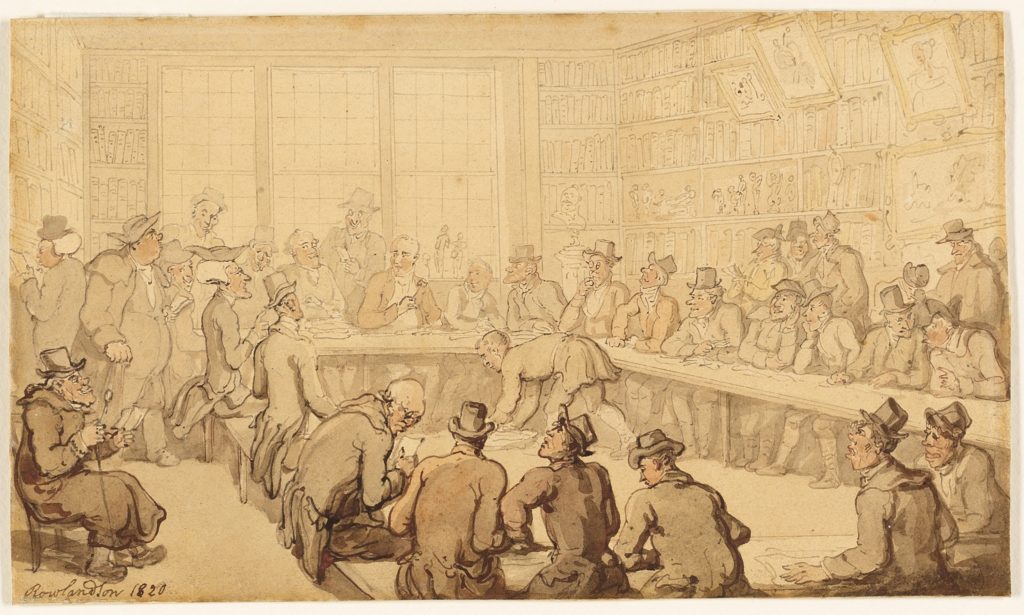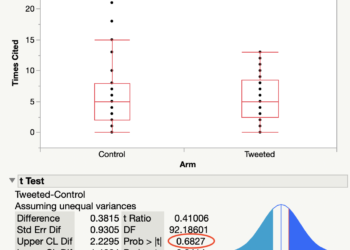Almost every discussion I have about Unsub, whether with librarians or publishers, at some point turns to assumptions about what decisions librarians will or will not make with respect to retaining subscriptions if they turn away from the Big Deal model for subscribing to journal content. To be absolutely clear, the context here is not about those libraries (e.g., University of California or Project DEAL) that walk away from the Big Deal as a result of failed negotiations to secure today’s Bigger Big Deal, the transformative agreement. The context is unbundling, changing from the Big Deal to either a la carte subscriptions or smaller packages of titles.
There are so many questions one can ask. Do more generous green open access policies carve out the value of subscriptions and make them vulnerable to cancellation? Are libraries overly focused on certain criteria and ignoring others? What about the role of the librarian in collection development and building a collection for the long-term? What criteria do libraries use in selecting which titles to retain? What happens to the journals that don’t get picked up as individual subscriptions? Will certain journals lose out and possibly cease to exist because libraries pick the same journals to retain?
The universe of libraries that even have Big Deal contracts that might be broken is relatively limited; some research libraries have never been able to afford the Big Deal. Nonetheless, examining those that unbundle can give us some empirical insight into the dynamics at play.
Today I share the results of looking at the retained title lists from seven libraries that walked away from Elsevier’s Big Deal package.

The Kept Collections
The seven libraries converted from the Elsevier Big Deal in 2019 or 2020. Four of the seven libraries have made their retained title lists publicly available (Iowa State University, University of North Carolina Chapel Hill, Florida State University, and SUNY) and three provided them to me upon request (West Virginia University, Louisiana State University, and Temple University). I am grateful to the librarians at all of these institutions for the data they provided as well as our conversations during the process of analysis and interpretation. The data I provide here required merging and de-duplicating the seven title lists, which included a great deal of variety in how journal names and ISSNs were recorded, and then using Excel to generate descriptive statistics.
Among the seven libraries, the number of titles retained varied greatly, from 150 titles at the low end to 819 at the high end. A total of 2776 subscriptions to 1253 titles were retained across the institutions. 503 titles (40%) were retained by only one institution; 750 titles (60%) were retained by more than one institution. 1051 of titles (84%) were retained by one to three institutions; 202 (16%) were retained by four or more.
Figuring out how many titles could be included in the Elsevier Big Deal is a bit complicated. The active journals list for ScienceDirect downloaded in June 2020 lists 2651. So, if we use that as the guide, it means that more than 50% of the titles were not retained by any of the libraries and more than 15,000 subscriptions were dropped.
Given the low end retention of only 150 titles, 150 is the maximum number of titles that could be kept by all seven libraries. A look at the specific titles, however, reveals that only 12 titles were kept across all institutions:
- Biological Conservation
- Biosensors and Bioelectronics
- Computers in Human Behavior
- Early Childhood Research Quarterly
- Food Chemistry
- Journal of Business Research
- Journal of Financial Economics
- Journal of Molecular Biology
- Trends in Ecology and Evolution
- Personality and Individual Differences
- Social Science and Medicine
- Water Research
Notable here is that the journals are not in a single field of study, or even a clustered set of fields. The titles kept by subsets of four to six libraries bear out a pattern of disciplinary diversity.
The Lancet and Cell, two of the more prominent journals in the Elsevier portfolio, were each retained by five libraries.
Considerations for Keeping
In reviewing materials published by the seven libraries about the process for deciding which titles to retain post-Big Deal — conference presentations, press releases, conversations, etc.– a number of factors emerged as impacting decision making:
- Product Tying: The pricing for ClinicalKey, a clinical decision support tool seen as an essential resource for many libraries that support a hospital, is impacted by whether a library subscribes to the journal titles whose content is included in ClinicalKey. Deciding whether to protect those titles or not was an important factor in identifying titles for retention.
- Usage: At its most basic, this is a simple metric and typically expressed as number of downloaded articles per title. Libraries often discovered that some titles saw essentially no or negligible use even if overall use of the Big Deal collection was high. Higher use titles were seen as more important to retain; however, not surprisingly, libraries stratified these decisions by field of study so as to keep the most used titles within disciplines, not only the most used titles overall.
- Purpose of Use: Libraries are increasingly interested in the purpose of use. Faculty research and clinical care are two categories of use that are prioritized; undergraduate student use may be seen as lower priority unless as assigned course reading.
- Immediate Access: The convenience and importance of immediate access for users is also part of the assessment of value. Libraries have alternative pathways to provide content to users — e.g., interlibrary loan and document delivery; however, they all increase friction in the user workflow and cause delay in information access. The cost of these alternative mechanisms is a consideration but so is the impact on the user experience.
- Open Access Availability: Though increasingly discussed as a possible consideration, few libraries assert that open access availability is driving their cancellations. This may evolve as cost modeling for alternative delivery matures through Unsub or other tools.
- Cost: Though libraries may have reasons for canceling the Big Deal other than price, some libraries canceled the Big Deal in order to address significant budget pressures and cuts. One library dean told me that, “we ranked the journals according to our criteria, and then went down the list until we reached what we could spend and that was it.” Some of the seven libraries were driven by benchmarking data that indicated they had previously been overpaying, e.g., Iowa State was paying twice as much as Oregon State.
- Value: Though often presented as overall cost/use, libraries are increasingly attending to cost/use for specific titles as well to see if the value is uniform or varies greatly and considering the impact of various factors in interpreting cost/use.
Future Analysis
While these are the stated decision-making factors, this analysis does not reveal if the titles that are canceled differ in any meaningful way from the titles that are retained. For example, are the canceled titles more homogenous with respect to discipline? Do the canceled titles have a higher predicted open access fulfillment rate? Is open access driving cancellation or retention decisions? These are just some of the additional questions that I’ll be continuing to pursue in the coming months with colleagues at Delta Think, The Curtin Open Knowledge Initiative, and elsewhere, as well as seeking to broaden the analyzed title lists to include those from libraries that break the Big Deal with other publishers such as Springer Nature or Wiley.
Discussion
11 Thoughts on "What Do Libraries Keep When They Cancel the Big Deal? "
Glad to hear that many big deals are being cancelled, though if I were Elsevier I would probably just raise the prices for the journals that are being retained to compensate for the loss – and this circle will never end as long as publishers own exclusive content. Do you think these libraries now shift some funds to the establishment / continuation of an institutional open access fund or find other ways to support OA publication to break that cycle? Where does the money they save go?
Lisa, thank you for this very insightful piece. Any idea about the volume of content retained, instead of the number of journals? How many articles could researchers access before and how many can they access now? Just wondering if it’s the smaller journals that got to be cancelled.
An interesting article – many thanks. Do you have any information about how this process impacts humanities and social science bundles, or are these journals simply considered too small beer either in cost or in scale of subscription to be of much interest?
A bit off-topic:
What Do [Researchers/pHD students] Keep When They Cancel the Big Deal?
mmmhhh… sci-hub?
All great questions. I don’t know what the savings are used for (except in cases to offset budget cuts and so then they are not being re-invested but rather protecting other things from being cut) – would be a great thing to investigate. Re larger/smaller journals and subjects – these are not things I’ve analyzed but will put them on the list to consider. Thanks for this feedback.
Out of the seven universities listed, at least three of them have libraries that have been vocal, public proponents of the OER movement (SUNY, especially). It wouldn’t surprise me if breaking ties with Elsevier was a mission-driven decision more than anything.
It takes two to tango. Elsevier has to own their own decision to not offer what the customer was willing to pay for.
Thanks for this article. This is something we are wrestling with at our institution. I had to chuckle at the question of where the savings go – we have to cut because the money is gone! Gone. That’s why the Big Deal gets cut- because funding is drying up. On the road to 2025…
For future study, an analysis of savings% with respect to the price of the entire big deal would be useful as well. I.e., if an institution is keeping 25% of its formerly Big Deal titles, is it saving 75% of its Big Deal Price? How is the new price for the retained titles calculated? Is it the list price of the journal, or its proportional price in the Big Deal, or is the new price usage based? And so on.
Great article! It would be nice to see which society journals are being kept.
Thanks so much for this Lisa. These following points are tangential to your project but things I’m interested in :
1. Where are users now getting access to the newly unsubscribed titles? Any patterns emerging?
2. What is the overall picture of zero or low use titles? Some research I did some years ago for one publisher uncovered a significant amount of titles in that category in individual title subscriptions (not big deal bundled ones). Back then it was hard to get time for the analysis as no tools existed.
3. Are librarians reserving any of the savings for resubscription to titles that emerge as needed and if so, what criteria would trigger a resubscription?
Bernie



